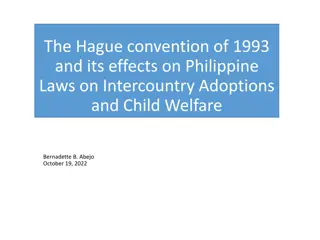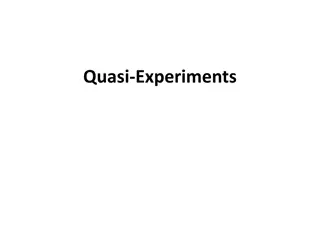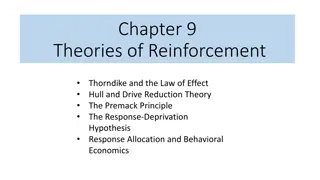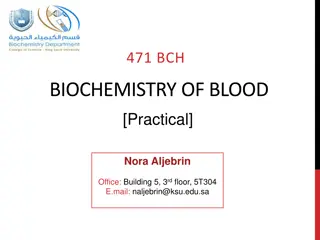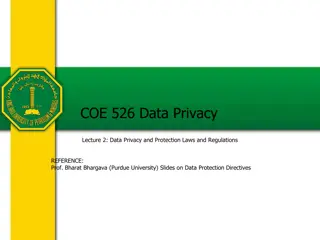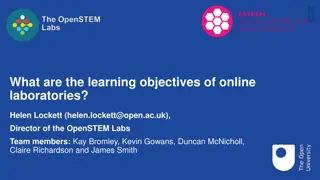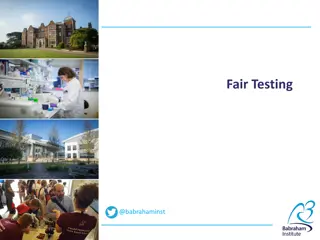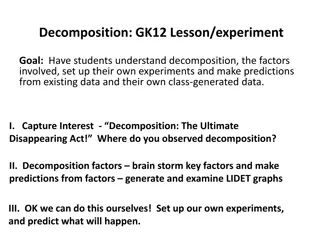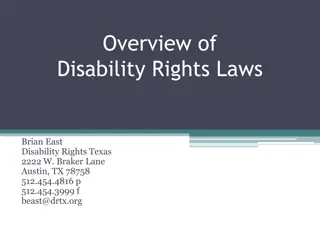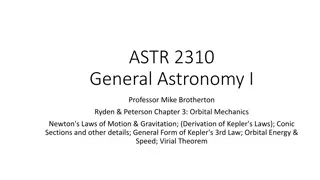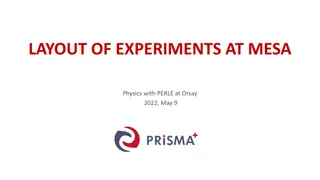Understanding the Laws of Learning: Thorndike's Experiments
Learning is a lifelong process that involves acquiring new knowledge, behaviors, and skills. This article explores the laws of learning, including the Law of Readiness, Law of Exercise, Law of Effect, and the importance of trial and error in learning, drawing insights from Thorndike's experiments. These laws underscore the significance of readiness, practice, emotional associations, and feedback in enhancing learning outcomes.
Download Presentation

Please find below an Image/Link to download the presentation.
The content on the website is provided AS IS for your information and personal use only. It may not be sold, licensed, or shared on other websites without obtaining consent from the author. Download presentation by click this link. If you encounter any issues during the download, it is possible that the publisher has removed the file from their server.
E N D
Presentation Transcript
Learning is the process of acquiring new understanding, knowledge, behaviours, skills, val ues, attitudes, and preferences. Human learning starts at birth, and continues until death. Learning is a process that leads to change, which occurs as a result of experience and increases the potential for improved performance and future learning The nature and processes involved in learning are studied in many established fields. (including educational psychology, neuropsychology, experimental psychology, cognitive sciences, and pedagogy),
Law of Readiness:-This law states that learning can only take place when a student is ready to learn. When students feel ready, they learn more effectively and with greater satisfaction than when not ready
Another law is that the law of exercise. This law of Thorndikes states that learning becomes efficient after practicing or exercising regularly and becomes weak after the trial or practicing is discontinued. Just take an example of football if you often practice your connection would be strengthened and if you stop practicing for an extended time the connection would be weakened. It has also two parts: Law of use: This law suggests that the connection between stimulus and response would be strong after its occurrence, use or practice. Law of disuse: This law suggests that the connection between stimulus and response would be decreased without practicing or use. "Use it or lose it"
Law of Effect:-Learning is strengthened when associated with a pleasant or satisfying feeling. Learning is more likely to happen again in the future. Learning is weakened when associated with an unpleasant feeling, becoming less likely for learning to occur again in the future. Learners will try to avoid it. Learning occurs when it results in satisfaction and the learner derives pleasure out of it.
This law states that if the result after trial and error is satisfying the strength of learning is increased. If the result s annoying the strength is reduced. Simply understand, once you get what you expected to urge from learning your motivation of learning is going to be increased, and once you didn t get the expected results your motivation would be decreased. So this law is that the effect of results after trials and errors.
Thorndikes experiments on a cat. He put a hungry cat in a puzzle box with just one door for the exit that would be opened only by correctly manipulating a latch (lock/key) and a fish was placed outside of the box. The smell of fish acted as a robust motive for the hungry cat to return out of the box. Initially, the cat randomly moved inside the box, he consequently made every possible effort to return out of the box. He made several random movements like squeezing, biting the walls, clawing, and dashing, etc. however nothings work at all. But in one among the random movements, by chance, the latch was manipulated. The cat came out and got rewarded for the fish. within the next trial, again an equivalent hungry cat was put within the same puzzle box, and out of doors a fish. The fish and its smell again worked as a motive for getting out of the box for the cat. He made again random movements. But at this point, he took less time in the beginning. On subsequent trials like incorrect responses, biting, clawing, and dashing were gradually diminished and therefore the cat took less time on every succeeding trial. within the course of the experiment, the cat was during a position to press or manipulate the latch as soon as he was put within the box.
Pavlovs experiment on dog. Pavlov, a Russian psychologist conducted an experiment. He placed a dog in a soundproof room, which had a small window that permitted observation from outside. When he presented meat powder to the dog, there was automatic secretion of saliva from the mouth of the dog just at the mere sight of the meat. Every time, the meat was presented a bell was rung. So ringing of the bell and sight of meat got inter- connected. Next time only the bell was rung but no meat presented. This time, although the natural stimulus (meat) was absent, the artificial stimulus (bell) was alone responsible for the natural response, i.e., the secretion of saliva. We may illustrate it by the following diagram. The technical terms used are: stimulus, response, unconditioned stimulus or natural stimulus, conditioned stimulus or unnatural stimulus, natural learning conditioned response.
Food is the stimulus, as it motives the dog to respond. His response is secretion of saliva. Food is natural or unconditioned stimulus, as it produces the response in a natural manners. Ringing of the bell is artificial or conditioned stimulus. The response of the dog when the conditioned stimulus alone is presented, is conditioned response.
(i) Kohler s experiment on Sultan (Experiment with box): Kohlar kept a monkey (named Sultan) hungry for some time, and then shut him in a large cage. He hung bananas from the ceiling, and kept a box on the floor of the cage, fast beneath. The monkey could not reach the banana. Another box was put in a corner of the cage. But Sultan could not get the idea of placing one box on the other and thus reaching the banana. Ultimately Kohlar gave demonstration of putting one box on the other. Sultan could now learn the whole situation. He used his intelligence and insight to put the two boxes one upon the other, stand on these and then reach the bananas.
(ii) Experiment with two sticks: In another experiment Kohler kept two sticks in the cage. One end of the shorter sticks could be fitted in the one end of the longer sticks, so as to make them longer. The monkey did not get the idea of forming the two sticks through trial and error. When Kohlar gave a hint through putting his finger in the whole of the bigger stick, the monkey viewed the whole situation and performed the right task through understanding the insight.
Nimisha Singh kushwaha Assistant professor Physical education dept




